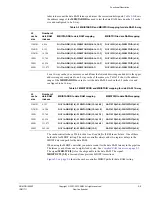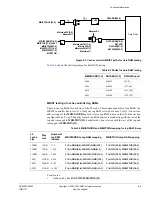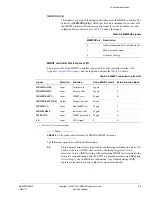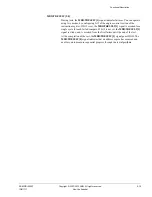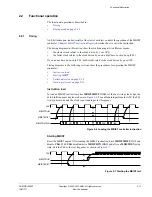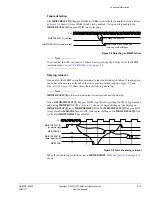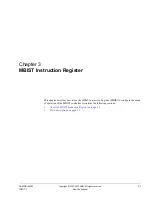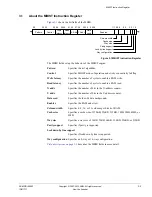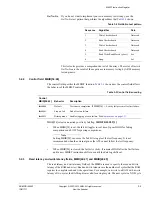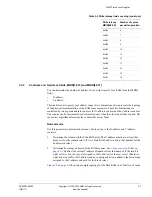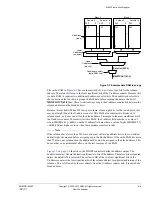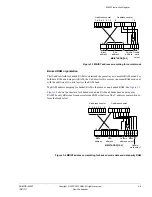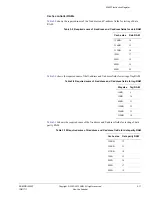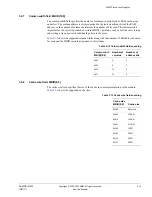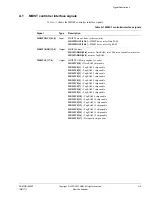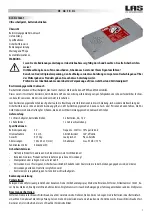
MBIST Instruction Register
ARM DDI 0402F
Copyright © 2007-2010 ARM. All rights reserved.
3-4
ID011711
Non-Confidential
Pattern specification
This section describes the MBIST test patterns. An x-fast pattern increments or decrements the
X-address counter first. A y-fast pattern increments or decrements the Y-address counter first.
Y-address and X-address fields, MBIR[36:33] and MBIR[40:37]
on page 3-7
describes the
X-address and Y-address counters.
The first four patterns are useful for data retention or I
DDQ
testing.
Write Solids
This initializes the RAM with the supplied data seed.
Read Solids
This reads each RAM location once expecting the supplied data seed.
Write Checkerboard
This initializes the RAM with a physical checkerboard pattern created by
alternating the supplied data seed and its inverse.
Read Checkerboard
This reads back the physical checkerboard pattern created by alternating the
supplied data seed and its inverse.
For the next set of patterns, the following notation describes the algorithm:
•
0 represents the data seed
•
1 represents the inverse data seed
•
w indicates a write operation
•
r indicates a read operation
•
incr indicates that the address is incremented
•
decr indicates that the address is decremented.
March C+ (x-fast or y-fast)
This is the industry-standard March C+ algorithm:
(w0) (r0, w1, r1) (r1, w0, r0) decr (r0, w1, r1) decr (r1, w0, r0) (r0)
Read Write March (x-fast or y-fast)
(w0) (r0, w1) decr (r1, w0) (r0)
Read Write Read March (x-fast or y-fast)
(w0) (r0, w1, r1) decr (r1, w0, r0) (r0)
Bang
This test is always performed in x-fast. It executes multiple consecutive writes
and reads effectively stressing a bit-line pair. While this pattern does detect
stuck-at faults, its primary intent is to address the analog characteristics of the
memory. In the following algorithm description, row 0 indicates a read or write
of the data seed to the sacrificial row, this is always the first row of the column
being addressed.
(w0) (r0, w0, w0(row 0) × 6)
(r0 × 5, w0(row 0), r0) (r0)


